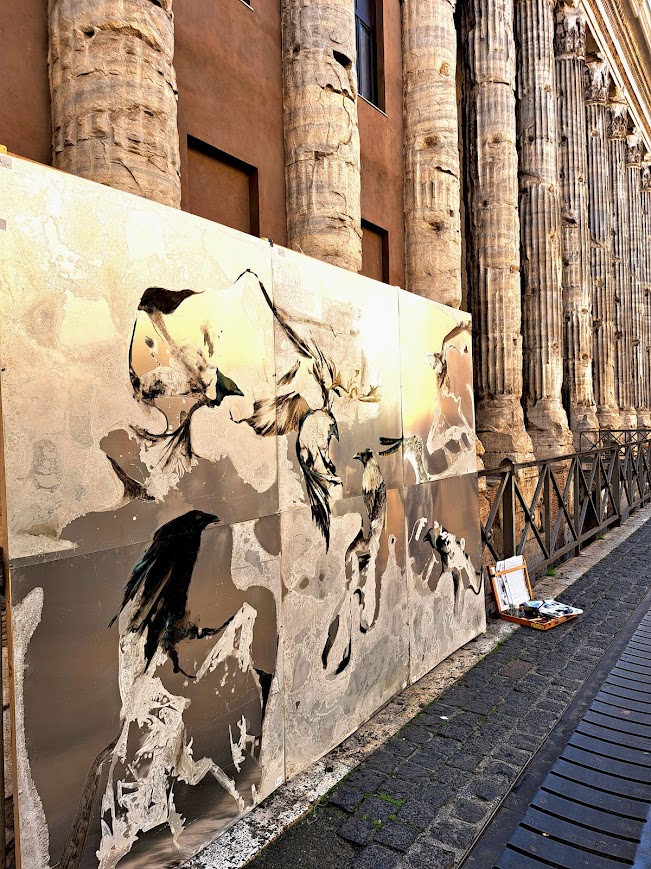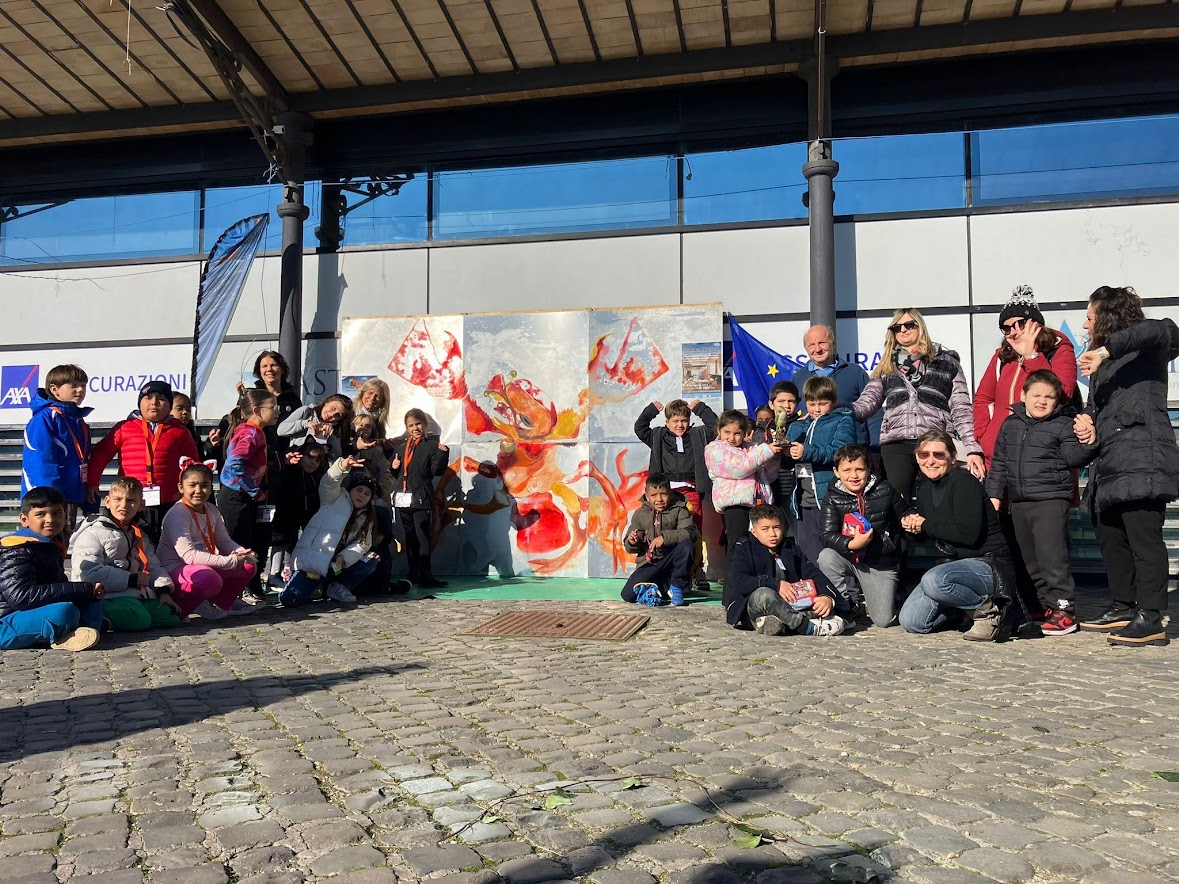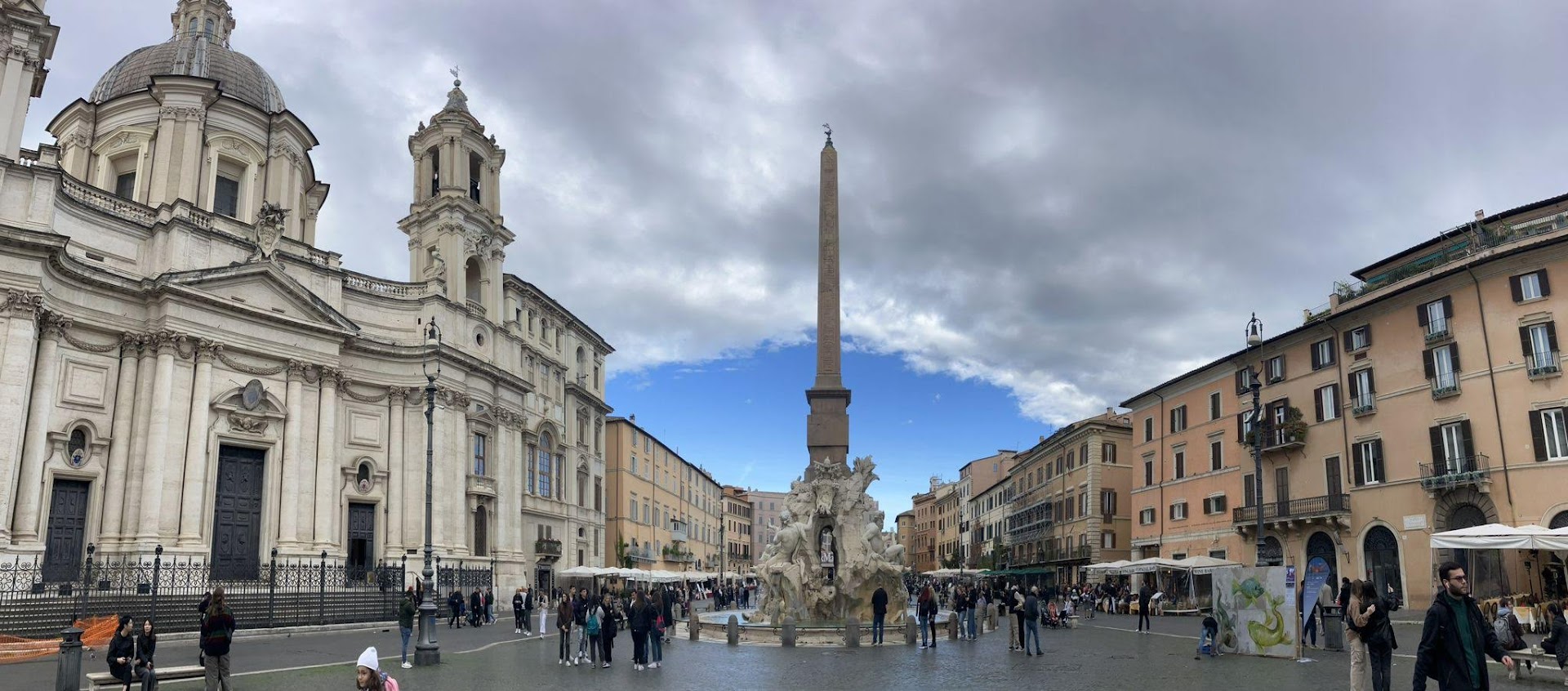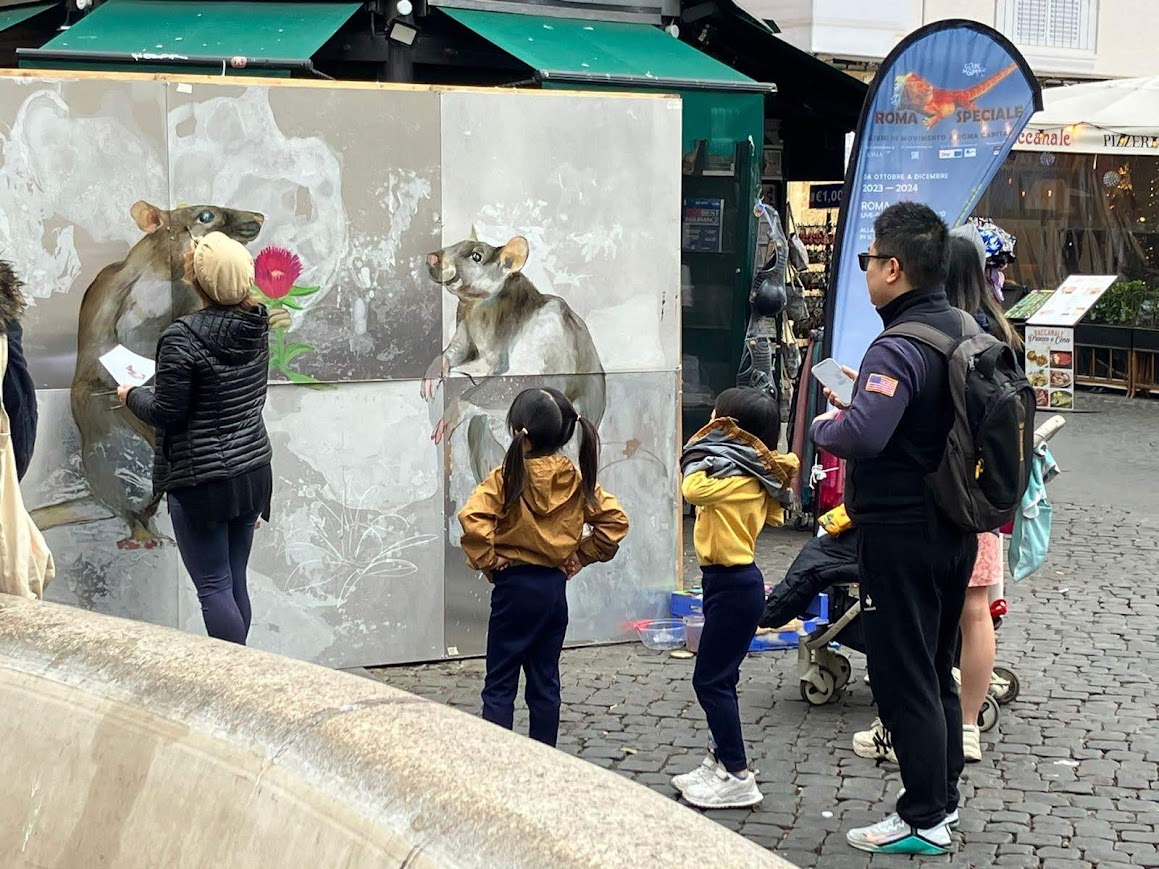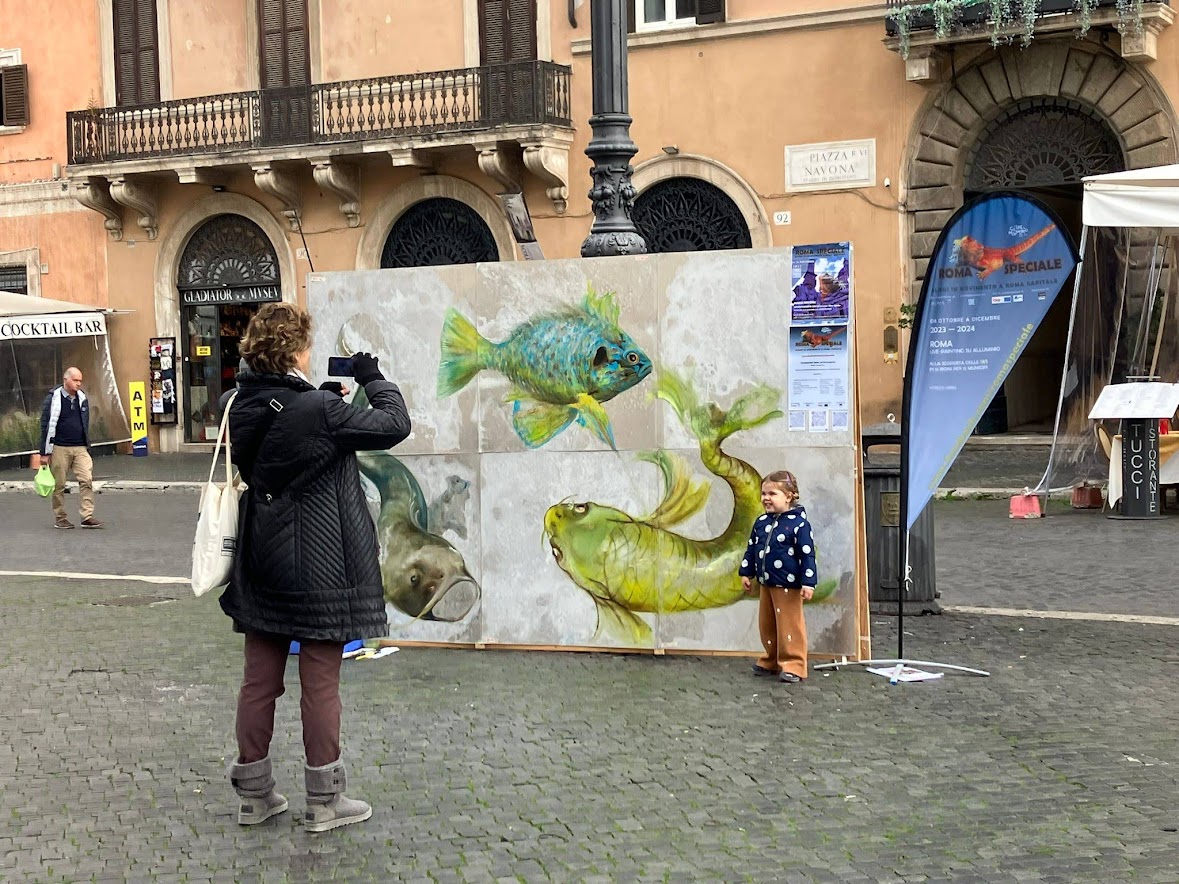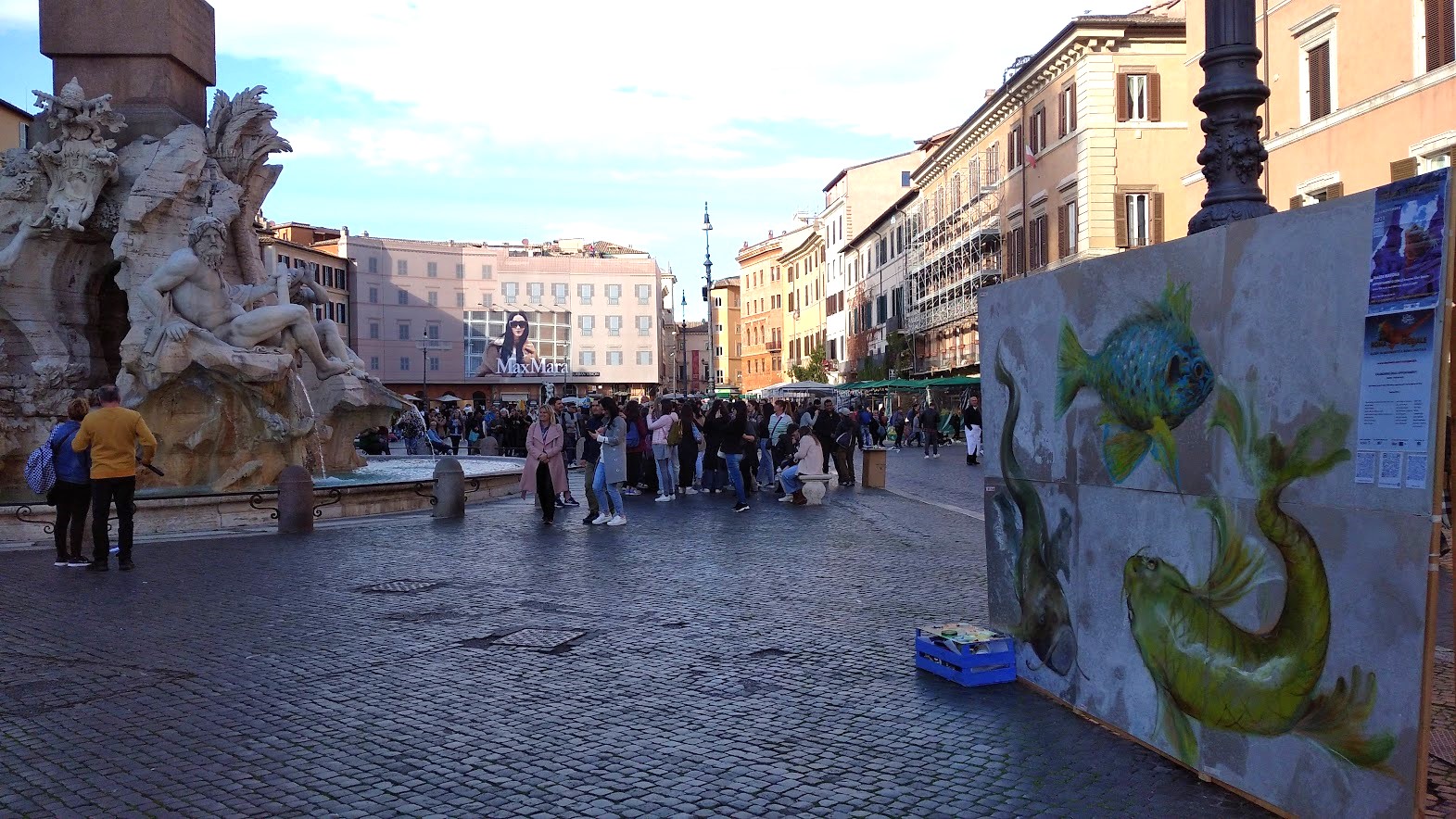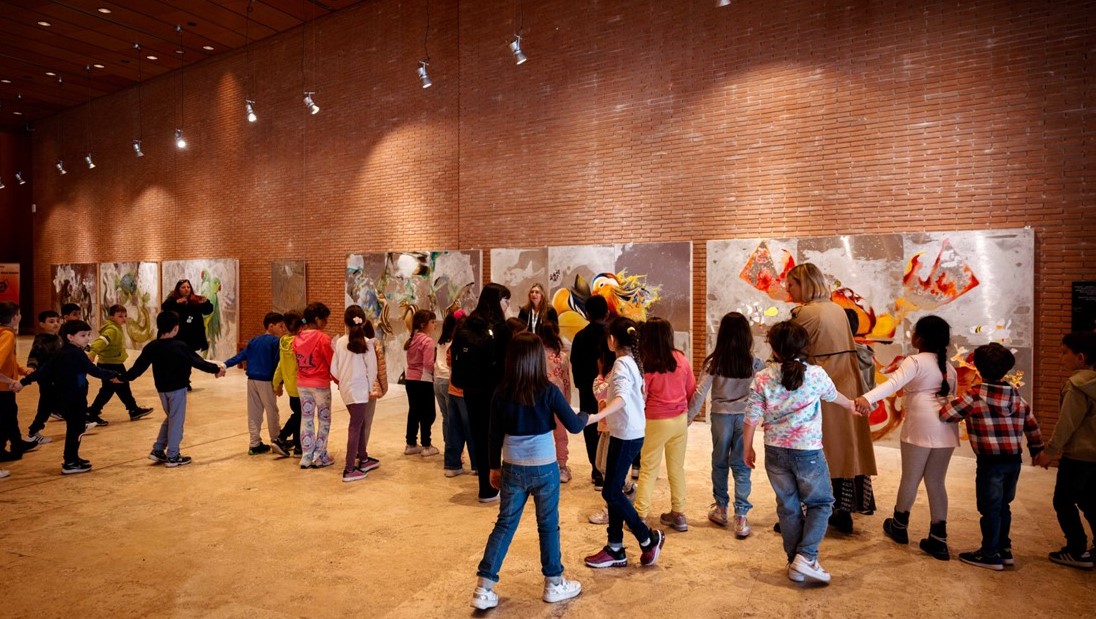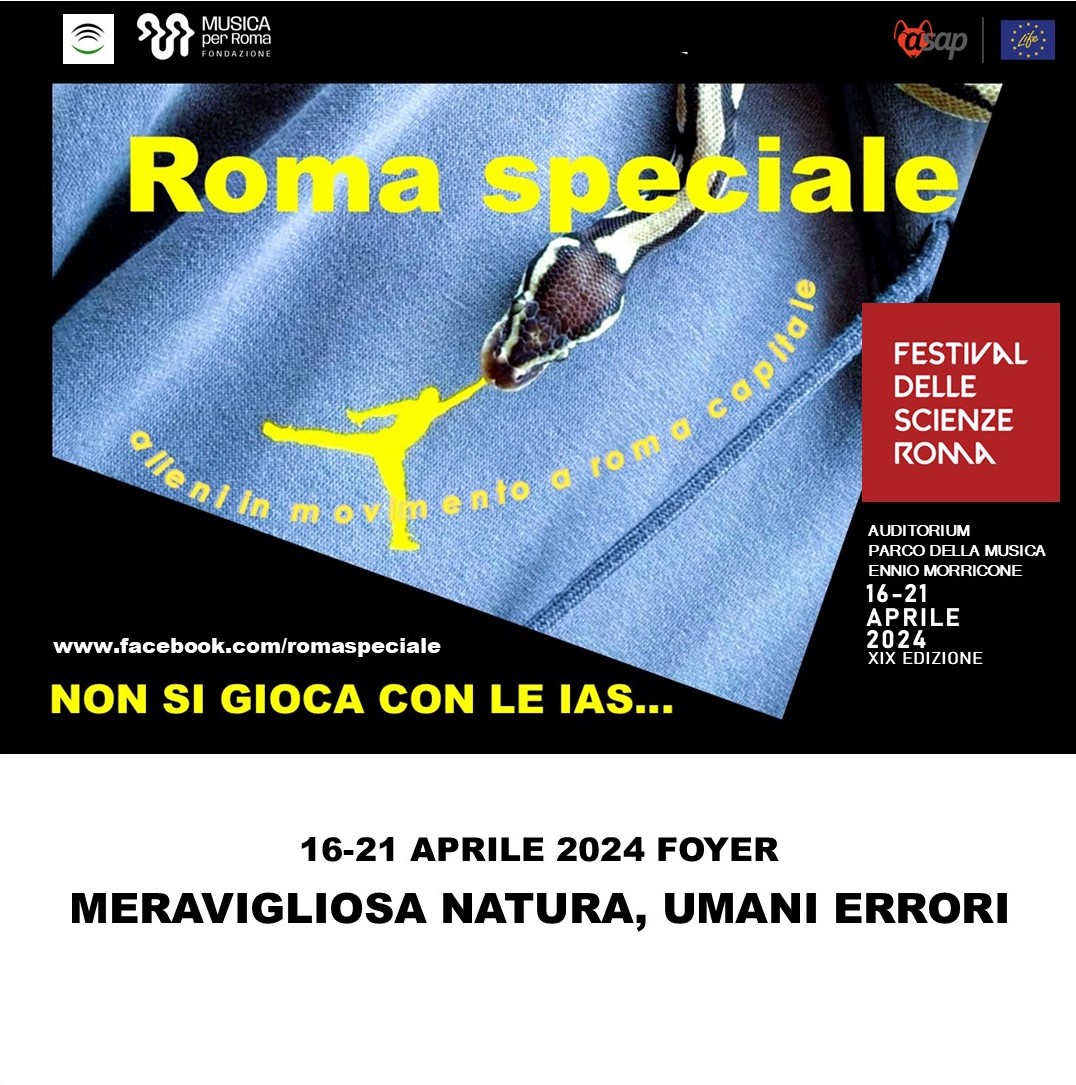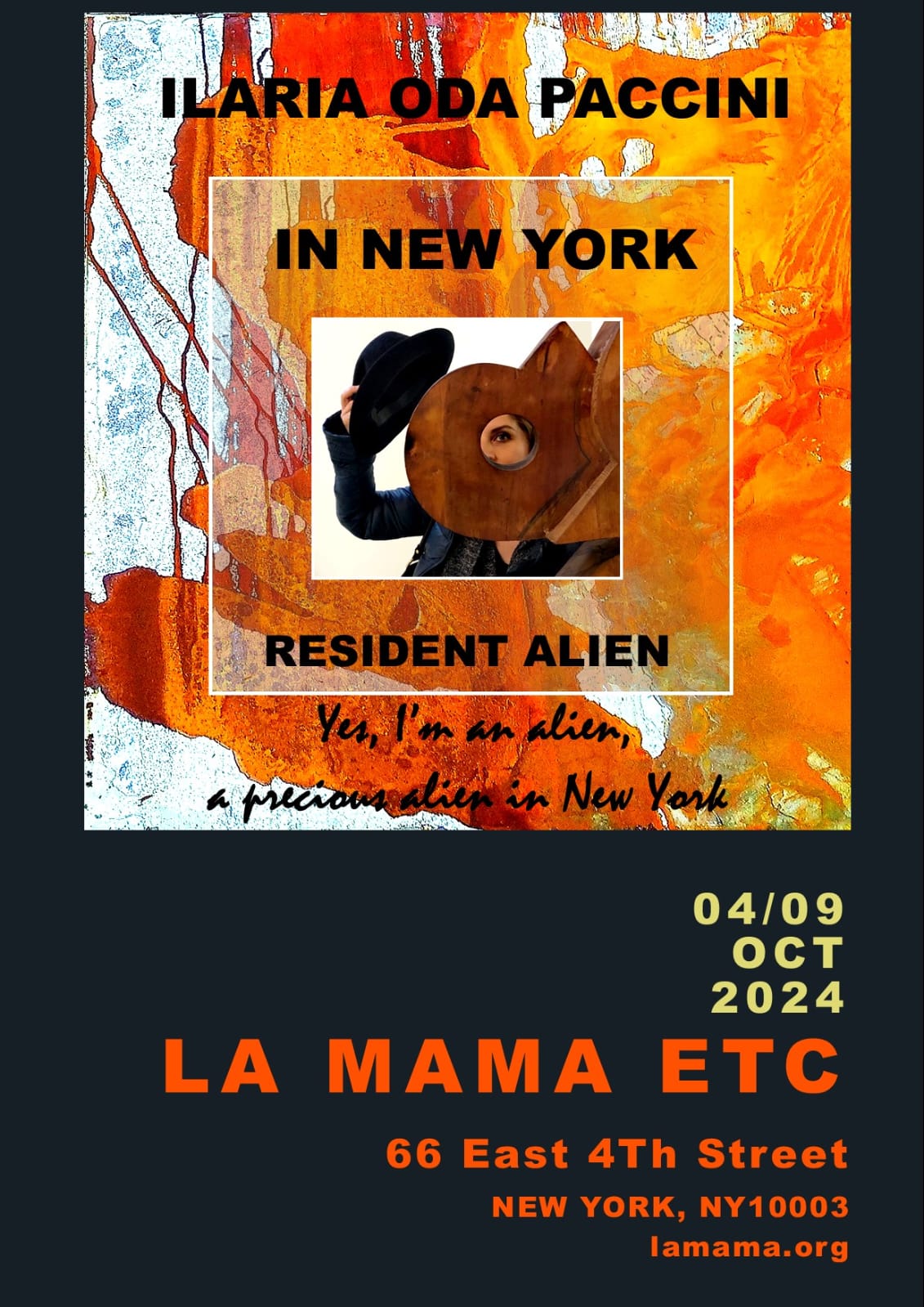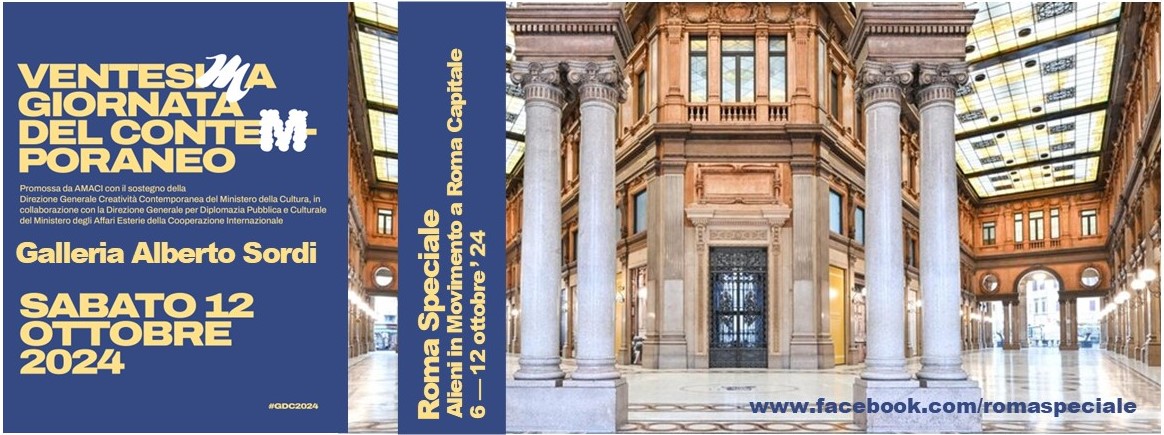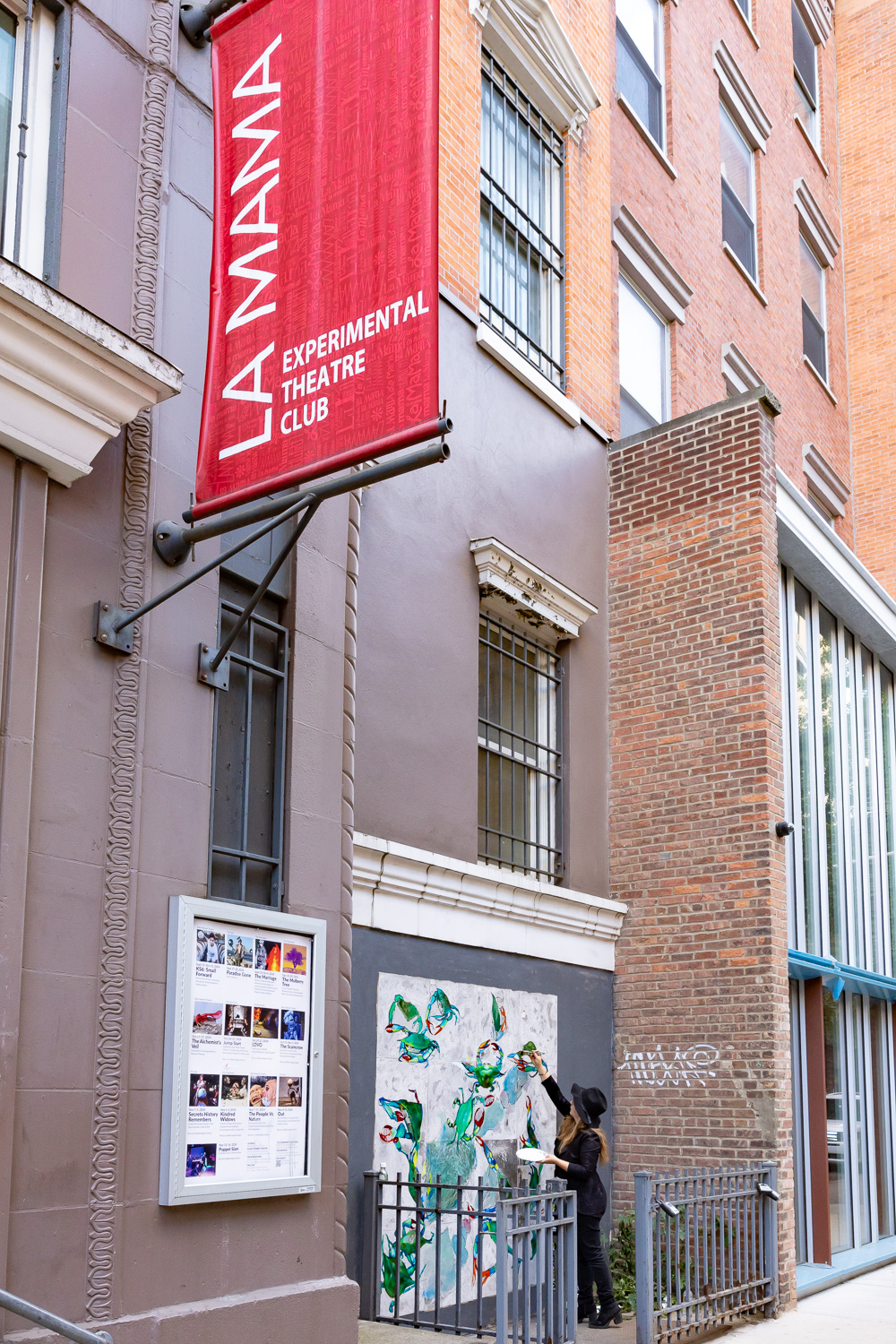Reconnecting with nature
ROMA SPECIALE
ROMA SPECIALE - ALIENS MOVING IN ROME 2023-2024
ROMA SPECIAL, conceived and managed by the artist Ilaria Paccini, has been defined by ISPRA (Italian Institute for Environmental Protection and Research) has “an embrace between art and the defense of biodiversity”, in cooperation with the “Life-ASAP”: to raise the citizens awareness and active participation on the impact of Invasive Alien Species (IAS). The artworks are live-performed on oxidised aluminium in the most famous locations of Rome to highlight the point of view of those species.
Italy
Local
Municipality of Rome
Mainly urban
It refers to other types of transformations (soft investment)
Yes
2024-12-13
Yes
Creative Europe
No
No
As an individual
The most important expected result from the project is to increase public awareness of the issue of Invasive Alien Species (IAS). To achieve this, during the biennial project "Roma Speciale", citizens were involved in the creation of 15 large artworks, live-painted in the most famous squares of Rome, representing 15 species found in the city that are classified as IAS. These species (both animals and plants introduced by humans outside their natural range) are among the main causes of biodiversity loss. Citizens, intrigued by the innovative painting technique (oil colours on oxidized aluminum slabs) and the beauty of the artworks, interacted with experts from ISPRA (the Italian Institute for Environmental Protection and Research), who were trained until 2020 in the European Program Life-ASAP. The scientists informed people about the dangers of the spread of IAS and specifically provided scientific guidelines to combat the intentional importation of exotic species, addressing the careless behaviour of those who accidentally pick up fungi, bacteria, and insects during their travels. The zoologists encouraged people to reconsider their relationship with wild species, as mismanagement of these can contribute to make our already fragile ecosystems even more vulnerable. IAS is a little-known and underestimated problem in Italy; however, the successful establishment of IAS has serious social, economic, and human health consequences. The city of Rome is a real hotspot for these species, so the prevention and management of their introduction is the main objective of the project. "Roma Speciale" aims to increase awareness and active community participation regarding the issue of IAS, specifically promoting EU regulations for the correct and efficient management of IAS. The successful communication campaign included targeted actions for schools, thanks to the Museum of the River (a project partner along with the experts from ISPRA/EU Awareness Program Life-ASAP).
biodiversity
awareness
integration
art
transdisciplinarity
Thanks to its zero environmental impact, the project highlights that art is the most sustainable way to enhance urban spaces, serving as an inspirational example that brings individuals and communities closer to nature. The project has the following specific objectives: 1. Regeneration of Knowledge: The collage of photographic portraits of the public is on the same level as the IAS (Invasive Alien Species), aiming to change the anthropocentric view. This prompts observers to see these animals not as invaders, but to address the issue at its correct primary cause: inappropriate human behaviour. 2. Behavioral Regeneration: thanks to the scientists trained in the LifeASAP Programme, people can regenerate their behaviour. QR code links to the project's web page and provides scientific information about IAS, their impact on the ecosystem and the correct and efficient scientific guidelines for the protection of urban greenery. 3. Infrastructure Regeneration: Community involvement is crucial because people can monitor the presence of other IAS and support ISPRA (Italian Institute for Environmental Protection and Research) in their identification efforts. This is a collective task for the entire community. 4. Regeneration of Opportunities: Through art, sustainable consciousness is conveyed not only at a cognitive level but also emotional one, by making the concept more deeply imprinted in the collective imagination. In particular, art has the advantage of making tangible what we imagine, which is very important for young people. The aluminum plates not only create a very contemporary artistic language (as aluminum changes according to light and reflects surrounding colours and shapes) but they also allow for the creation of truly sustainable artworks. Aluminum is lightweight, durable, and fully recyclable; cities are the perfect urban mine. Additionally, aluminum melts at lower temperatures than other metals, requiring less energy and producing lower CO2 emissions.
The primary aim of the project is to engage people and spark their curiosity. The project creates a moment of suspension in which passers-by stop, despite their busy and hectic lives, and find in art a point of quiet to reflect on environmental health. Reconnecting with nature and its protection is a message reinforced through the poetry conveyed by the materials used to create the artworks: oxidation is allowed to act freely, as it changes the artwork over time until its eventual completion, reminding us that humanity is not eternal. The pictorial technique represents the dynamism of nature. While the oxidation changes, the subject of the painting remains the same (oil paint protects the surfaces from oxygen), so two artists work on the painting: Natural Chemistry, with its abstract language, and Human Painting, with its narrative and figurative representation of species. If the artwork is successful, both parts (nature and humanity) are in balance. People grasp the message perfectly and internalize the meaning of the artworks through emotional understanding. Many people have their photographic portraits incorporated into the artworks, illustrating that we are a species among other species.
The artistic performative actions (live painting) that took place in the beautiful squares of Rome were completely accessible to everyone and served as a perfect urban theatre to convey the environmental and social messages of the project. The architecture of the magnificent squares was enhanced by the artworks, creating a pleasant surprise among the public, who expressed their appreciation for such free of charge events and congratulated the municipal administration for financing such an itinerant artistic initiative. The live painting performance was an inclusive and interactive way to convey important social values. The protection of biodiversity means enhancing an environment rich in diverse life forms, each of which interacts in a dynamic balance with the others. Humanity is integrated into this balance. This means that, even within our species, it is necessary to respect the same harmony: the domination of one over another, with the paradoxical and violent deletion of entire cultural "ecosystems", is not acceptable. This is an important principle that has been taught in schools, along with the lesson that love is respect—toward exotic or wild animals that should not be kept at home, as well as toward the respect that forms the basis of friendship or partnership. During the New York City Special Event, the project addressed respect both for nature and diversity. The protection of cultural, religious and gender freedom for every minority was represented by the artwork “Resident Alien,” dedicated to Quentin Crisp. The piece, created on oxidized aluminium, was painted during the Italian Contemporary Art Week organized by AMACI (Association of the Italian Contemporary Art Museums) and represents blue crabs."
All the people (citizens and tourists) were involved in the project on multiple levels. At the beginning, they were engaged through art in the creative process (emotional level). Then, they were included by the scientists in the environmental issues for which we are all responsible (awareness level). In the end, they were connected to the social media pages (Facebook and Instagram) related to the development of the project and, above all, to the ISPRA guidelines and the Life-ASAP social web page. Most of them agreed to be photographed and their portraits were displayed on the artworks (active level), empathizing with the Invasive Alien Species (divergent thinking). The experience with the popular school of Testaccio neighbourhood was very interesting: it’s a multi-ethnic educational institution where the inclusion of foreign children was very heartfelt. There, the defence of the multifaceted nature of biodiversity was very impactful. The artistic performative actions (live painting) that took place in the beautiful squares of Rome were completely accessible to everyone and served as a perfect urban theatre to convey the environmental and social messages of the project. The architecture of the magnificent squares was enhanced by the artworks, creating a pleasant surprise among the public, who expressed their appreciation for such free of charge events and congratulated the municipal administration for financing such an itinerant artistic initiative. The live painting performance was an inclusive and interactive way to convey important social values.
The project has benefited from the scientific collaboration of two partners: the Nazzano River Museum (Director Umberto Pessolano) and ISPRA scientists, trained in the Life-ASAP EU Programme (which ended in 2020). The involvement of both partners was crucial in providing scientific rigor to the explanations for the public. Both of them were involved providing the artist with the scientific literature on Invasive Alien Species (IAS) and helping artist to select those species which will be represented. In turn, the Roma Speciale Project enabled the partners to develop their dissemination activities by expanding their audience, which had previously not been easily reached, benefiting especially from contacts with schools. The school has planned a trip to the Museum and has utilized the informational materials from Life-ASAP to conduct an in-depth lesson on IAS: an important current theme to be addressed with children at school. Life-ASAP has increased its audience and has been able to give new impetus to the program of information and monitoring of species in urban environments, thanks to citizens' reports. The community is now more aware and informed about the importance of urban greenery, which is a significant resource for the quality of life in the city. The municipality was affected from the free events that animated the squares of Rome, and above all, the special exhibition event, managed simultaneously in Rome and New York, was greatly appreciated. At the regional and national levels, the initiative is part of the efforts for the conservation of biodiversity: many people informed by the project were national and international travellers. The European Programme Life, Environment - Nature and Biodiversity has been engaged from a project that has disseminated its principles and aims through the beauty of art.
The project envisions the intersection of art and science, chemistry and biology, extending to bioethics. Ilaria Paccini’s creative journey results in artworks that leverages an innovative language, producing not only striking images but also genuine works of art, as the pieces are not just beautiful but convey complex meanings. Professional artistic research, backed by 20 years of experience in oxidized metals and the study of artistic language, has been combined with the high scientific expertise of ISPRA experts, who were trained until 2020 in the Life-ASAP Programme: the European program specializing in “citizen science” events based on the EU regulation against spread of IAS (EU 1143/2014). The public awareness days were conducted by excellent speakers, who are actively engaged in the frontline of biodiversity defense (Dr. Papik Genovesi team), intertwining their knowledge with art and providing the most up-to-date information on IAS. The social communication aspect of the project, along with the care in monitoring and welcoming the public during the performances, was entrusted to a very young girl passionate about natural sciences; through this project, she began her own training. For the technical aspects (balancing the chassis and ensuring its safe installation), engineer Francesco Tomiolo devised a tailored solution for each performance.
The innovative aspect of the project lies primarily in the unique painting technique applied to oxidised aluminium slabs: the image changes as nature and the environment evolve, and its balance with human action (the painting) serves both as the key to the artwork's operation and as the environmental message of the project. The project demonstrated that direct contact with individuals, facilitated by the emotional connection offered by the artwork, was the most effective way to convey scientific concepts, compared to conferences, seminars, or even exhibitions on the subject. The presence in the square, a quintessential meeting place in Italian culture, has the advantage of eliminating the distance between people and allows to the transmission of the values of social cooperation that the place itself represents.
The methodology used for the project is art performance sharing, and the approach is interdisciplinarity: Ilaria Paccini sets up a large frame (3 x 2 meters) composed of oxidised aluminium plates, which immediately begin a slow process of intensification. During the painting days, the artist represents one or more animal and plant species. Ilaria Paccini places the figure within the spots formed by oxidation, gradually creating the final image. The painting takes place in the square, where it engages with the public, who, even if only for a few moments, pause to observe and are welcomed by the experts from Life-ASAP. The scientists support the artist by explaining the project and the issues related to IAS. Informational materials are distributed, and people can access the project's social media page, which leads to the LIFE-ASAP Rules of Conduct and the ISPRA web page. This approach has also been extended to the schools in the popular district of Testaccio through a drawing workshop on the shape, aimed at developing imagination and nature observation.
The project is entirely replicable everywhere, and indeed its funding would make its itinerant development possible in other contexts, both national and international.
The “Roma Speciale” project contributes to reducing the introduction rate of Invasive Alien Species (IAS) in the City of Rome and its surrounding areas, while also addressing the mitigation of their impacts. In particular, it aims to increase awareness and encourage the active participation of citizens regarding the issue of the Invasive Alien Species (IAS). These organisms (including plants, animals, fungi, bacteria, and viruses) are introduced by humans outside their natural range, either intentionally or accidentally. Some of them successfully establish and thrive in their new environment, leading to negative impacts and becoming invasive. This poses serious threats to the survival of many native species and is one of the main causes of biodiversity loss. Invasive Alien Species are a top priority for the EU Commission, through the sub-program DG Environment – Nature and Biodiversity (EU1143/2014).
Roma Speciale has proven to be an effective information tool for raising awareness and fostering interaction with communities regarding the urgent issue of Invasive Alien Species (IAS). The actions of Life-ASAP (the EU program that concluded in 2020) have been expanded, both during the course of the project and will continue to develop in the future, thanks to the upcoming exhibition of the artworks. The artworks remain successful due to the innovative painting techniques and the social message embedded in the project. In 2024, some of the works participated in the following events: FESTIVAL DELLE SCIENZE DI ROMA 2024, CONTESTECO CONTEST, and GIORNATA DELL’ARTE CONTEMPORANEA AMACI. In 2025, a selection of works will be featured at GEMINI, an artistic event at the Appia Antica Regional Natural Park during the Jubilee 2025. Currently, the most significant development of the project has taken place in Manhattan (New York City), where the artist created a live painting that is still on display as of today at La MaMa Theatre. The artwork represents blue crabs, an invasive alien species in Italy but at risk of extinction in New Jersey!"

